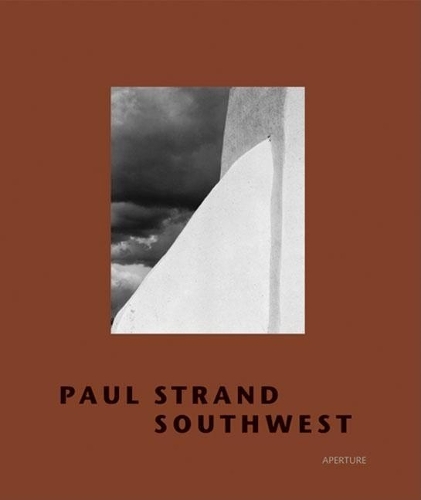
Paul Strand: Southwest
(Hardback)
Available Formats
Paperback
Published: 10th September 1991
Hardback
Published: 6th February 2013
Hardback
Published: 21st September 2005
Hardback
Published: 6th February 2015
Publishing Details
Paul Strand: Southwest
By (Author) Paul Strand
Aperture
Aperture
21st September 2005
United States
Classifications
General
Non Fiction
Individual photographers
779.092
Physical Properties
Hardback
112
Width 243mm, Height 289mm
Description
For Paul Strand the summers of 1926 and 1930-1932 marked a period of critical artistic growth. Absorbing the Southwest's complex cultural history, Strand made pictures that merged realism with abstraction, and formalism with an American romanticism. He began to shape his ideas of photographing a region in depth - the collective portraiture that he later expanded in Mexico, New England, Africa, and Europe. The Southwest period brought not only artistic renewal, but also personal turmoil. His political and social ideas were shifting, and his relationship with the two most important people in his life - his wife Rebecca and his mentor Alfred Stieglitz - were disintegrating. This book reconstructs, in an intimate, visual way, the emotional and creative swirl around Paul Strand. Each summer the Strands stayed with Mabel Dodge Luhan at her fabled Taos ranch, where many illustrious guests drifted through, from D. H. Lawrence to Ansel Adams. The linking of Strand's photographs to the New Mexico paintings of his friends Marsden Hartley, John Marin, and Georgia O'Keeffe (enriched by many personal letters, snapshots, and artifacts) reveals the flavor of an extraordinary environment and the cross-pollination of ideas. While a handful of Strand's Southwest photographs have been previously published, Ranchos de Taos Church and City Hall among them, this period of his outstanding career remains largely unexplored. Paul Strand Southwest presents many images for the first time, including dramatic landscapes, decayed ghost towns, the noble architecture of adobe churches, and his final, austere portraits of Rebecca.
Author Bio
Paul Strand was one of the great photographers of the twentieth century. As a youth, he studied under Lewis Hine and went on to draw acclaim from such illustrious sources as Alfred Stieglitz. After World War II, Strand traveled around the world to photograph, and, in the process, created a dynamic and significant body of work. A major retrospective of his work was shown at the Philadelphia Museum of Art in October 2014. Paul Strand was one of the great photographers of the twentieth century. As a youth, he studied under Lewis Hine and went on to draw acclaim from such illustrious sources as Alfred Stieglitz. After World War II, Strand traveled around the world to photograph, and, in the process, created a dynamic and significant body of work. A major retrospective of his work was shown at the Philadelphia Museum of Art in October 2014. Trudy Wilner Stack is curator of collections and exhibitions at the Center for Creative Photography, University of Arizona.
